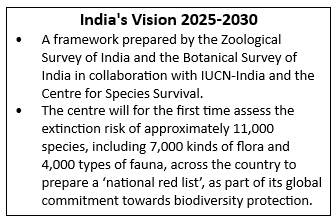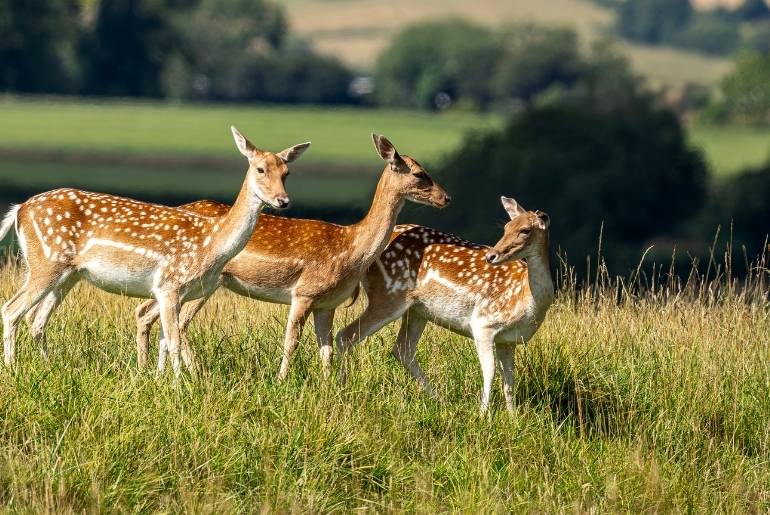Syllabus:
GS-3: Conservation, environmental pollution and degradation, environmental impact assessment
Context:
Recently, India launched the National Red List Assessment to map species extinction risk.
More on the News

- India launched the initiative to accurately assess the conservation status of its species and fulfil commitments under the Convention on Biological Diversity and the Kunming-Montreal Global Biodiversity Framework.
- The National Red List Roadmap was unveiled at the IUCN World Conservation Congress in Abu Dhabi.
- It will create a nationally coordinated red-listing system to support conservation planning, policy making and threat mitigation.
- The Union Minister of State for Environment presented India’s Vision 2025-2030 for the National Red List Assessment.
- The programme aims to publish National Red Data Books for both flora and fauna by 2030, using IUCN-aligned scientific guidelines.
Biodiversity Richness of India
- India is one of the world’s 17 megadiverse It is home to four of the 36 global biodiversity hotspots, the Himalayas, Western Ghats, Indo-Burma, and Sundaland.
- Although the country occupies just 2.4% of the world’s land area, it harbours nearly 8% of global flora and 7.5% of global fauna, with over 28% of plants and 30% of animals being endemic.
- The nation has documented more than 1,04,000 faunal species, over 18,000 species of flowering plants, and nearly 20,000 marine species

Sources:
Indian Express
The Hindu
UNEP Org

